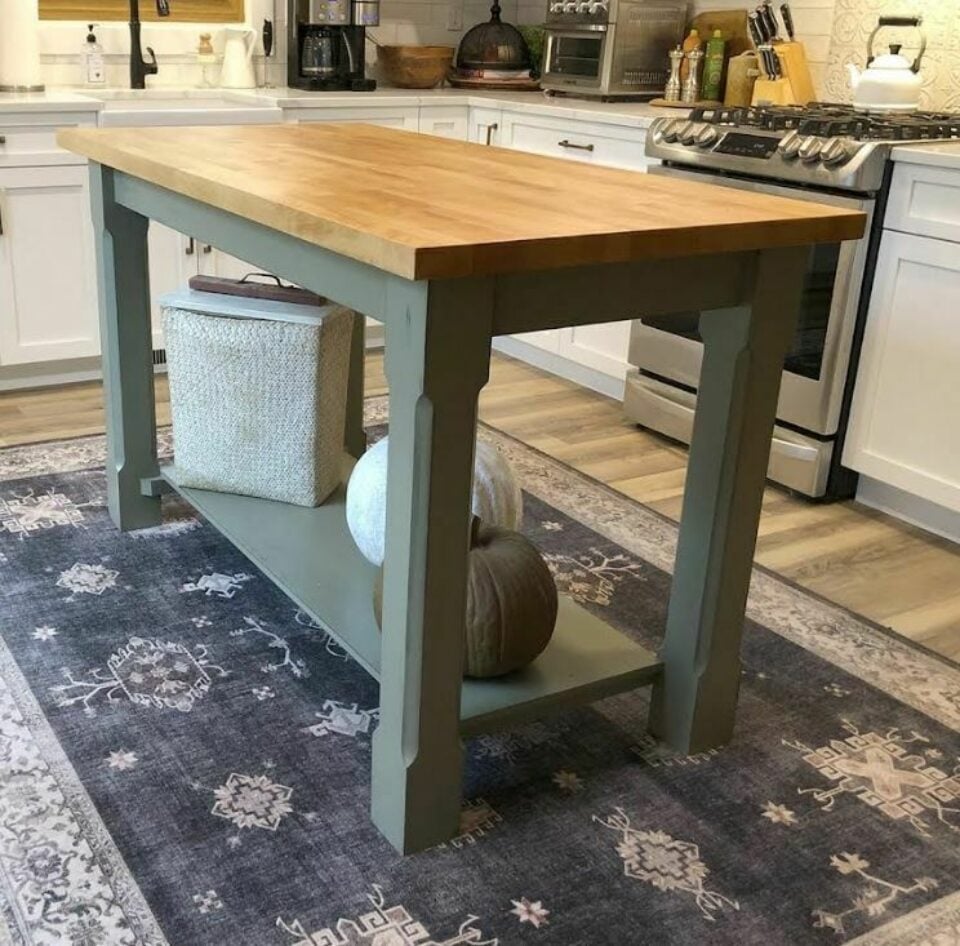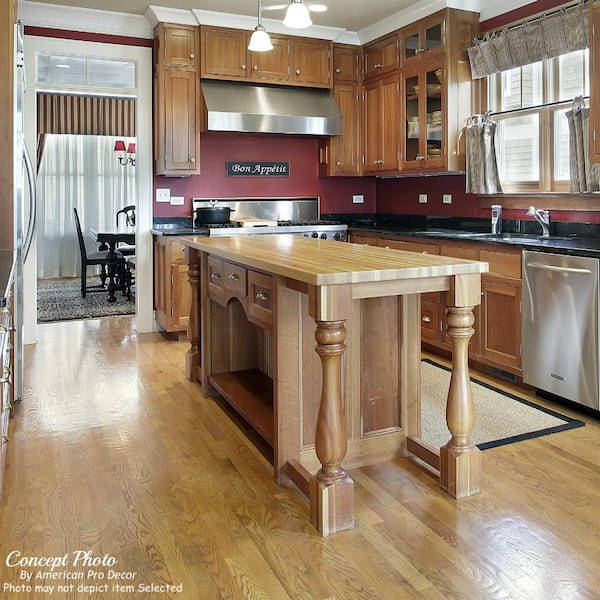Update Your Kitchen with Trendy Kitchen Island Leg Solutions
Wiki Article
Discovering the Necessary Functions of a Kitchen Island Leg for Your Culinary Room
The cooking area island serves as a main hub in any type of cooking space, and the selection of leg design is crucial in improving both its capability and visual charm. Understanding the vital attributes of kitchen island legs-- consisting of product options, style styles, and stability aspects-- can significantly affect the total experience within the kitchen.Significance of Cooking Area Island Legs
Kitchen island legs play a vital duty in both the functionality and appearances of a kitchen room. They not just support the weight of the island but also enhance the total design, adding to the cooking area's aesthetic charm. The option of legs can dictate the design of the cooking area, be it modern, conventional, or rustic.Functionally, robust and correctly designed legs make certain stability, permitting the risk-free usage of the island for various jobs such as food prep work, dining, or amusing. Strong legs stop wobbling and shifting, offering a trustworthy surface for day-to-day tasks.
Additionally, the height and positioning of the legs can influence the comfort degree for those seated at the island. A well-considered elevation can accommodate bar stools or chairs, promoting an inviting setting for gatherings.
Along with these functional factors to consider, cooking area island legs can act as a prime focus in the room (kitchen island leg). Ornamental or uniquely developed legs can raise the style aesthetic, making the island a focal point. Therefore, picking the right kitchen island legs is important for stabilizing kind and function in any type of culinary room
Product Options for Legs
Picking the proper product for kitchen area island legs substantially affects both resilience and style. Typical material options include metal, stone, and timber, each offering distinct advantages.Wood is a popular selection because of its warmth and convenience. It can be quickly personalized to match different style designs, from rustic to contemporary. Hardwoods like oak and maple give superb toughness and longevity, while softer woods can be much more susceptible to tear and put on.
Metal legs are favored for their sleek, modern aesthetic. kitchen island leg. Stainless-steel and aluminum are not only durable but additionally immune to rust and rust, making them excellent for kitchen area settings. They can create a commercial appearance and are frequently available in various finishes to match other cooking area aspects
Stone legs, such as granite or marble, include a component of high-end and stability. While heavier than other materials, they use extraordinary resilience and can hold up against substantial weight. They may call for additional support to guarantee proper balance.
Inevitably, the selection of material must line up with both functional demands and the total layout vision of the kitchen area room, ensuring that the island legs improve both energy and visual appeals.
Layout Designs to Consider
What design styles should be thought about when picking legs for a kitchen area island? The option of leg style substantially influences the total aesthetic of your culinary room. For a contemporary kitchen area, minimalistic and smooth leg styles, such as stainless-steel or geometric shapes, can enhance the modern appeal, giving a clean and clean appearance.On the other hand, traditional kitchen areas gain from traditional styles such as transformed or carved wood legs, which include warmth you can try this out and personality. These choices frequently include elaborate information that complement classic furnishings. For a rustic setting, consider legs made from reclaimed timber or wrought iron, which bring an organic, earthy quality to the room.
If you lean in the direction of an industrial motif, robust steel legs with a distressed surface might be suitable, providing an edgy yet sophisticated touch. Additionally, farmhouse design cooking areas can incorporate chunky legs that stimulate a sense of durability and homeliness.

Height and Security Variables
The elevation and security of a kitchen island are critical aspects that directly influence its functionality and individual experience. An optimal cooking area island leg must offer sufficient height to accommodate a variety of jobs, from food prep work to laid-back eating.Stability is similarly essential, especially as kitchen area islands usually function as prime focus in culinary atmospheres. A steady leg layout reduces shifting and wobbling, which can bring about crashes or discomfort throughout use. Materials such as solid wood, steel, or a mix thereof are frequently utilized to accomplish the essential sturdiness. The leg's add-on to the island's base have to be safe, making certain durability and strength against the wear and More Help tear of daily usage.
Customization and Accessories
Personalization options and accessories for cooking area island legs can substantially enhance both the visual appeal and functionality of the space. Homeowners can choose from a variety of materials, including rock, steel, and timber, enabling seamless integration with existing kitchen design. The option of finish-- be it a natural tarnish, repaint, or powder finishing-- further individualizes the look, making sure that the island matches the general design motif.In addition to product and surface, property owners may likewise explore the consolidation of devices such as attractive brackets, flexible feet, or incorporated shelving. Braces can offer additional support while adding to a rustic or modern-day aesthetic. Adjustable feet are particularly advantageous for irregular flooring, guaranteeing the island stays steady and degree, which is important for both safety and security and usability.

Conclusion
In verdict, kitchen area island legs serve a vital duty in supplying security and improving the general visual of the culinary room. The selection of materials and style styles adds to both performance and visual charm, while considerations of height and security guarantee sensible use. Personalization choices and devices can raise the cooking area island, making it a distinct focal factor within the home. Hence, mindful factor to consider of these attributes is essential for an effective kitchen design.The kitchen island offers as a main center in any type of culinary space, and the selection of leg layout is essential in improving both its performance and visual appeal. Recognizing the crucial attributes of kitchen area island legs-- including material alternatives, layout styles, and security elements-- can considerably impact the total experience within the cooking area.Kitchen area island legs play a vital function in both the performance and aesthetic appeals of a click for more info kitchen area space.What layout styles should be thought about when choosing legs for a kitchen island?In verdict, kitchen area island legs serve a vital function in providing security and boosting the overall aesthetic of the cooking space.
Report this wiki page